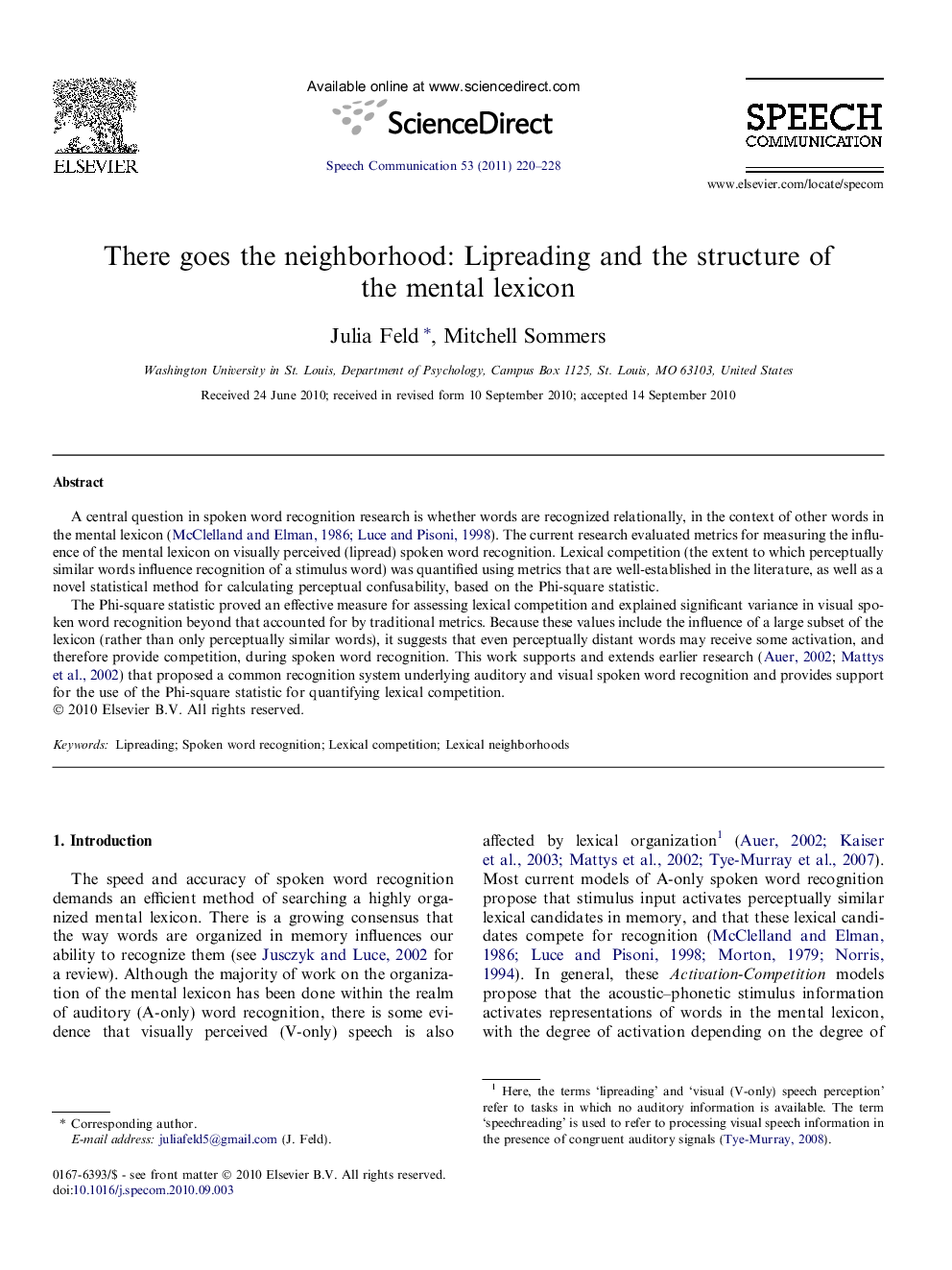| Article ID | Journal | Published Year | Pages | File Type |
|---|---|---|---|---|
| 567556 | Speech Communication | 2011 | 9 Pages |
A central question in spoken word recognition research is whether words are recognized relationally, in the context of other words in the mental lexicon (McClelland and Elman, 1986 and Luce and Pisoni, 1998). The current research evaluated metrics for measuring the influence of the mental lexicon on visually perceived (lipread) spoken word recognition. Lexical competition (the extent to which perceptually similar words influence recognition of a stimulus word) was quantified using metrics that are well-established in the literature, as well as a novel statistical method for calculating perceptual confusability, based on the Phi-square statistic.The Phi-square statistic proved an effective measure for assessing lexical competition and explained significant variance in visual spoken word recognition beyond that accounted for by traditional metrics. Because these values include the influence of a large subset of the lexicon (rather than only perceptually similar words), it suggests that even perceptually distant words may receive some activation, and therefore provide competition, during spoken word recognition. This work supports and extends earlier research (Auer, 2002; Mattys et al., 2002) that proposed a common recognition system underlying auditory and visual spoken word recognition and provides support for the use of the Phi-square statistic for quantifying lexical competition.
Research highlights► Phonological density predicts visual (lipread) spoken word recognition accuracy. ► Density measures that use the Phi-square statistic show better prediction than other methods. ► Word frequency predicts visual (lipread) spoken word recognition accuracy.
